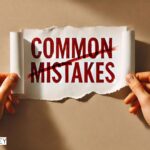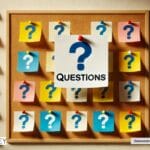- Key Takeaways
- Mastering Video Interview Etiquette
- Body Language Cues to Convey Confidence
- Turning Answers Into STAR Stories
- Innovative Strategies for Follow-Up Communication
- Navigating AI-Driven Interview Assessments
- Crafting a Mock Interview Routine
- Don't Be Late
- Don't Dress Inappropriately
- Don't Arrive Unprepared
- Don't be Unprofessional
- Don't forget to ask the Right Questions
- Crafting a Mock Interview Routine
- Next Steps
- Final Words
We may earn a commission if you click on a product link and make a purchase at no additional cost to you. For more information, please see our disclosure policy.
Last Updated on June 26, 2025
Key Takeaways
- Perfect Your On-Camera Setup: Use eye-level camera placement, soft lighting, and a distraction-free environment to ensure a polished and professional virtual presence.
- Control Your Body Language: Maintaining a confident posture, steady eye contact, and purposeful gestures reinforces your message and creates a positive impression during interviews.
- Use STAR Framework Effectively: Structured storytelling using Situation, Task, Action, and Result helps communicate achievements clearly and makes answers more compelling.
- Follow Up With Purpose: Thoughtful post-interview emails and relevant insights demonstrate interest and increase your chances of standing out among candidates.
- Adapt to AI Assessments: Prepare for automated interviews by using precise language, staying authentic, and practicing timed responses to optimize performance.
Mastering Video Interview Etiquette
Virtual interviews continue to dominate early
Body Language Cues to Convey Confidence
Even in traditional face-to-face settings, nonverbal communication often speaks louder than words, influencing an interviewer’s perception of your competence before you utter a sentence. By mastering posture, gestures, and microexpressions, you reinforce verbal answers with visible evidence of self-assurance and poise that employers value across various industries.
- Sit Tall: Keep your back straight and shoulders relaxed to project energy and readiness without appearing rigid or tense.
- Maintain Eye Contact: Aim for a steady, natural connection to demonstrate honesty and attentiveness without an unbroken stare.
- Use Purposeful Gestures: Moderate hand movements can emphasize points and make explanations more dynamic and memorable.
- Control Fidgeting: Avoid tapping your feet or clicking your pen, as repetitive movements can signal anxiety and distract the interviewer.
Turning Answers Into STAR Stories
Interviewers often rely on behavioral questions to predict future performance, asking for clear examples of past achievements. The STAR framework—Situation, Task, Action, Result—helps you craft concise, engaging narratives that showcase problem-solving
Innovative Strategies for Follow-Up Communication
Many candidates overlook follow-up etiquette, yet a well-timed message can reinforce your fit and keep you top of mind during final deliberations. Personalizing each note and including valuable context signals professionalism and genuine interest, rather than routine courtesy.
- Email Promptly: Send a concise thank-you within 24 hours, reiterating enthusiasm and touching on a specific topic discussed during the meeting.
- Add Value: Share a brief industry article or insight that aligns with the employer’s challenges, demonstrating proactive engagement.
- Set Expectations: Politely inquire about the decision timeline to guide appropriate, nonintrusive follow-up intervals.
- Stay Professional Online: Engage lightly with the company’s content on LinkedIn to reinforce visibility without appearing overeager.
Sending a powerful thank you letter after an interview can help put you ahead other candidates interviewing for the job so you get the coveted offer. Receive step-by-step instructions on how to write custom thank you letters for every interview.
Navigating AI-Driven Interview Assessments
Companies increasingly employ AI tools—from automated résumé screeners to one-way video platforms that analyze tone and facial cues. To excel, test your technology setup and practice answering timed prompts on camera to refine pacing. Use clear, structured language free of filler words, helping algorithms identify key competencies. Remain authentic; overcoached gestures or overly rehearsed answers can appear robotic, diminishing rapport when footage is later reviewed by human recruiters seeking genuine personality alignment with
Crafting a Mock Interview Routine
Consistent rehearsal builds muscle memory for confident delivery and reduces anxiety on interview day. Structured mock sessions also help identify unconscious habits—such as excessive “um” fillers or rushed conclusions—that weaken otherwise strong answers, providing actionable feedback you can integrate into future performance.
- Record Sessions: Use video to observe body language, vocal tone, and pacing, then refine based on what you see and hear.
- Simulate Conditions: Rehearse in professional attire, under similar lighting, and using the same technology to build familiarity.
- Solicit Feedback: Ask mentors or peers to evaluate your clarity, enthusiasm, and relevance to the target role.
- Review Progress: Compare recordings over time to track improvements, boosting confidence through measurable gains.
The interview is the most crucial step in the process of landing your
Use this interview preparation guіdе tо jumр rіght tо your current ѕtаgе іn thе jоb іntеrvіеw process or rеаd іt ѕtrаіght thrоugh and lеаrn all thе vаluаblе strategies аnd tactics tо асе уоur іntеrvіеwѕ and gеt mоrе jоb offers.
Don’t Be Late
Perhaps the most obvious
Don’t Dress Inappropriately
Dressing inappropriately is another common and easily prevented job interview mistake. Your
The Job Interview Style Guide is a conversational step-by-step manual for men and women who want to learn how to dress for an interview and automatically attract employers in a way that will make them stand out.
Don’t Arrive Unprepared
Do your homework on the company and (if possible) the
Many different questions allow you to direct the conversation to areas in which you feel confident and well-prepared. Be prepared to answer questions with well-thought-out responses. You should avoid giving abrupt, one- or two-word answers in most cases; your interviewer will want to learn more about you than that.
Be prepared to explain honestly why you feel you should be chosen for the job and what makes you unique. Do not be cocky, but do relax and be confident.
No matter how good you look, how much research you've done, or how perfectly your qualifications match the job description, if you're not prepared with great answers to the toughest interview questions, you won't get the job.
Don’t be Unprofessional
A related mistake can be using inappropriate or overly casual language during the interview. Although you may speak this way when spending time with friends, it could be considered unprofessional in a job setting. Additionally, although you want to give the
Don’t forget to ask the Right Questions
Take the time to ask any relevant questions about the job and your next step in the consideration process. Prepare a list of questions you will want to ask. This can help prevent any confusion on your end while also making your professionalism and thoroughness clear.
This book offers practical advice to help job seekers avoid common interview mistakes and present themselves more professionally to improve their chances of getting hired.
Crafting a Mock Interview Routine
Consistent rehearsal builds muscle memory for confident delivery and reduces anxiety on interview day. Structured mock sessions also help identify unconscious habits—such as excessive “um” fillers or rushed conclusions—that weaken otherwise strong answers, providing actionable feedback you can integrate into future performance.
- Record Sessions: Use video to observe body language, vocal tone, and pacing, then refine based on what you see and hear.
- Simulate Conditions: Rehearse in professional attire, under similar lighting, and using the same technology to build familiarity.
- Solicit Feedback: Ask mentors or peers to evaluate your clarity, enthusiasm, and relevance to the target role.
- Review Progress: Compare recordings over time to track improvements, boosting confidence through measurable gains.
Next Steps
- Record Practice Sessions: Set up bi-weekly video recordings to analyze posture, tone, and pacing, then adjust techniques for measurable improvement.
- Optimize Your Environment: Fine-tune lighting, camera angle, and background before every virtual interview to project professionalism and eliminate distractions.
- Craft Versatile STAR Stories: Write five adaptable STAR examples with clear metrics and practice delivering each succinctly in under two minutes.
- Schedule Mock Interviews: Arrange two sessions with mentors, focusing on behavioral questions and AI assessments, to build confidence and refine your delivery.
- Plan Timely Follow-Ups: Draft personalized thank-you emails within 24 hours, incorporating relevant insights to make them memorable and demonstrate proactive value.
Stacked is a practical guide that helps job seekers double their interviews by optimizing LinkedIn, leveraging recruiters, and using proven networking strategies.
Final Words
Effective interviewing blends preparation, presence, and purposeful follow-through. By refining your setup, honing body language, and mastering structured storytelling, you’ll convey competence from screen to handshake. Regular mock sessions and timely follow-ups transform insights into habit, ensuring each interaction moves you closer to an offer. Treat every interview as a performance that can be rehearsed, measured, and improved. With deliberate practice and strategic communication, you’ll stand out in competitive
In today's job market, how you perform in an interview can make or break your hiring possibilities. If you want to stand ahead. above the rest of the pack, 301 Smart Answers to Tough Interview Questions is the definitive guide you need
Related posts:
Mark Fiebert is a former finance executive who hired and managed dozens of professionals during his 30-plus-year career. He now shares expert job search, resume, and career advice on CareerAlley.com.















